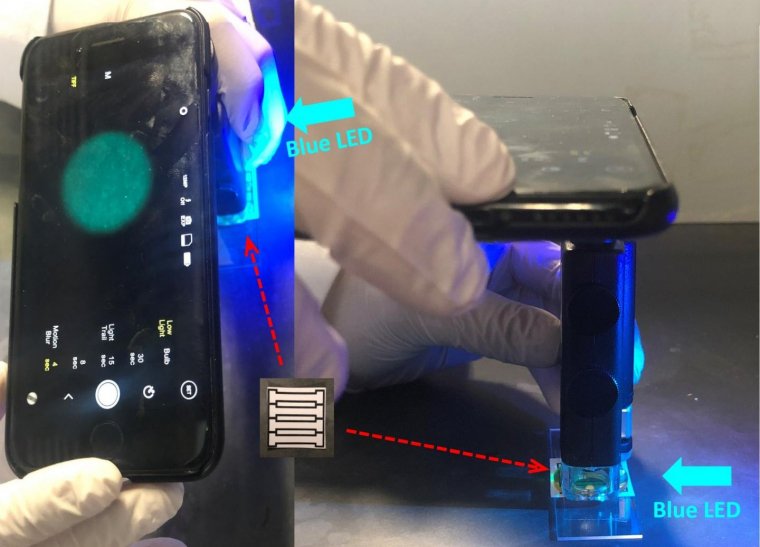| News / Science News |
Using a smartphone to detect norovirus
A little bit of norovirus -- the highly infectious microbe that causes about 20 million cases of food poisoning in the United States each year -- goes a long way. Just 10 particles of the virus can cause illness in humans. With support from NSF through its Water and Environmental Technology Center, a team of University of Arizona researchers has created a simple, portable and inexpensive method for detecting extremely low levels of norovirus.

A sensitive new device can detect tiny amounts of norovirus in water. Photo: American Chemical Society
Advances in rapid monitoring of human viruses in water are essential for protecting public health. This rapid, low-cost water quality monitoring technology could be a transformational tool for reducing both local and global disease burdens.
"The challenges addressed by the work of NSF's Water and Environmental Technology Center impact important industries," said Prakash Balan in NSF's Division of Industrial Innovation and Partnerships.
"Entities that treat wastewater and drinking water, plus companies that create and service technologies for removal of contaminants from water could greatly benefit from this technology."
Norovirus can spread quickly through a community through its water supply. The virus causes about 200,000 deaths globally each year. (National Science Foundation)
YOU MAY ALSO LIKE





